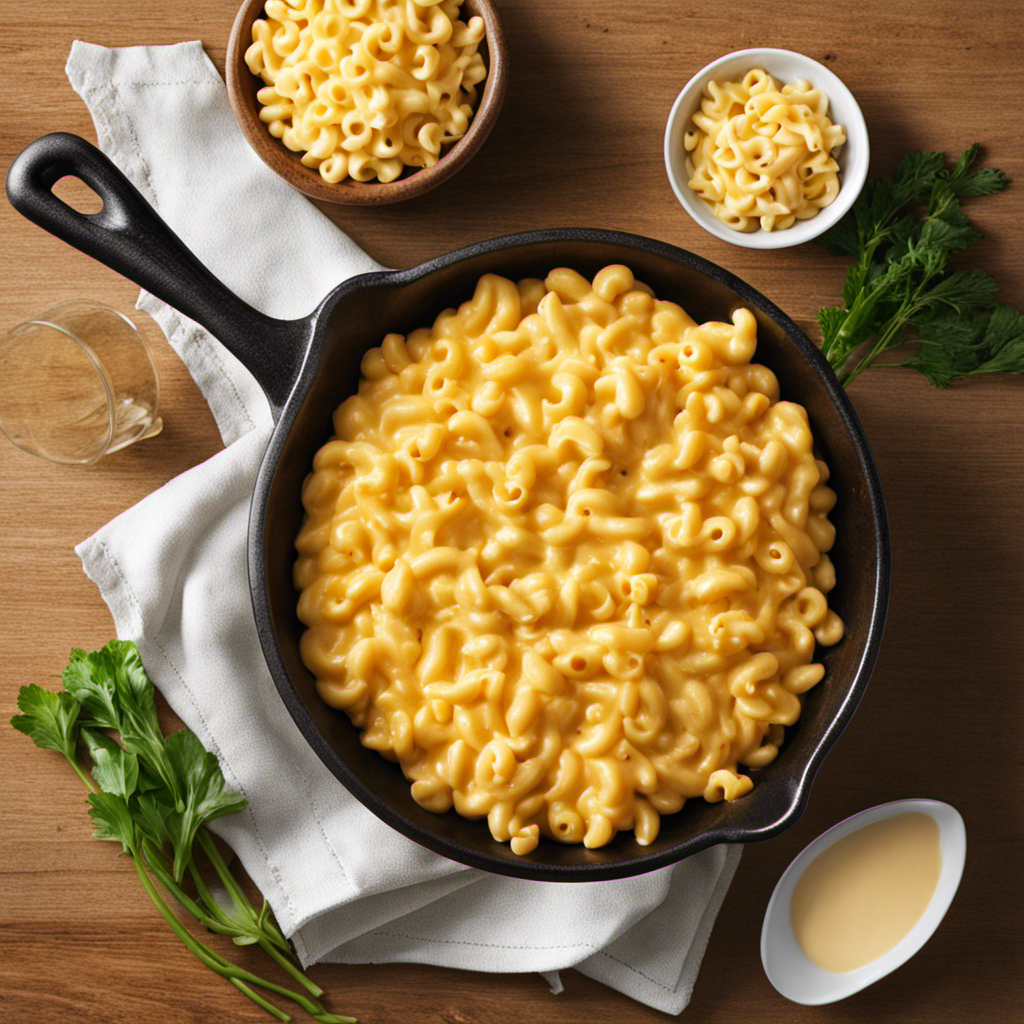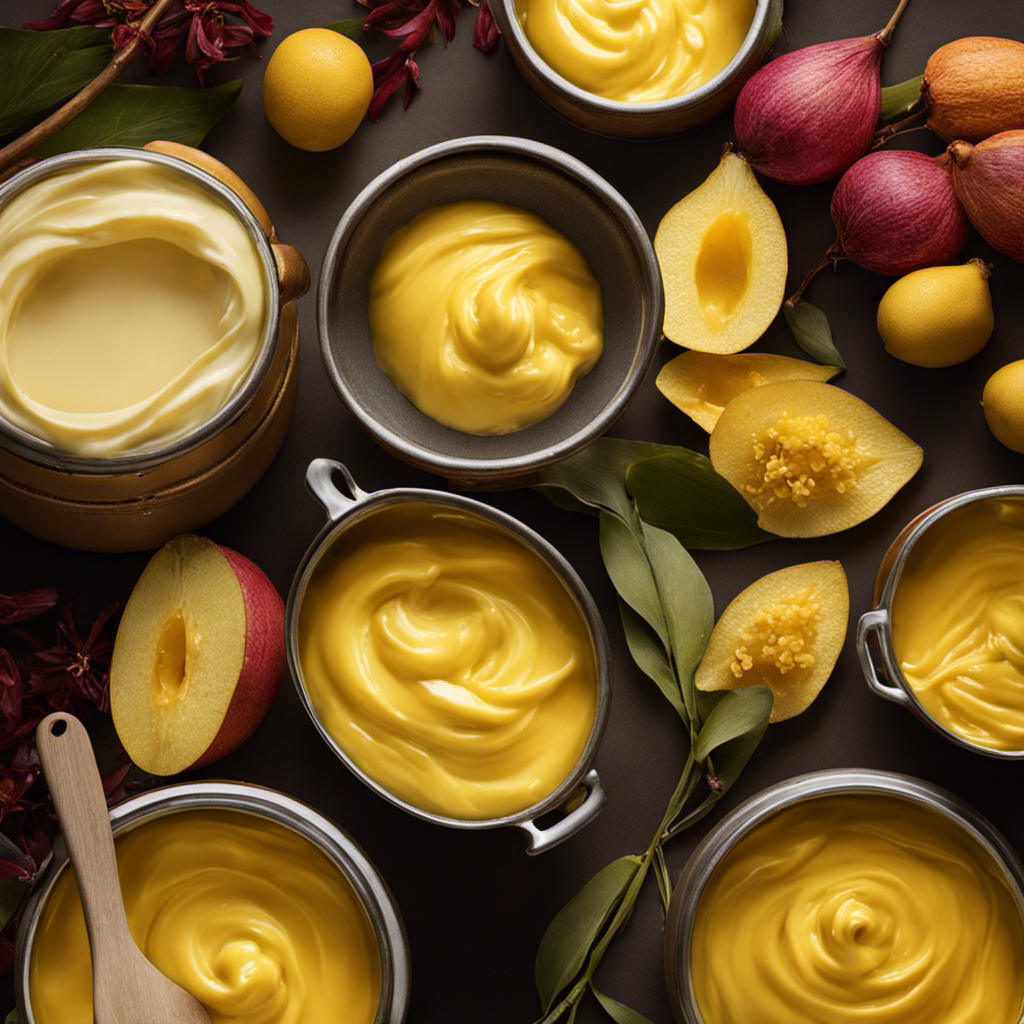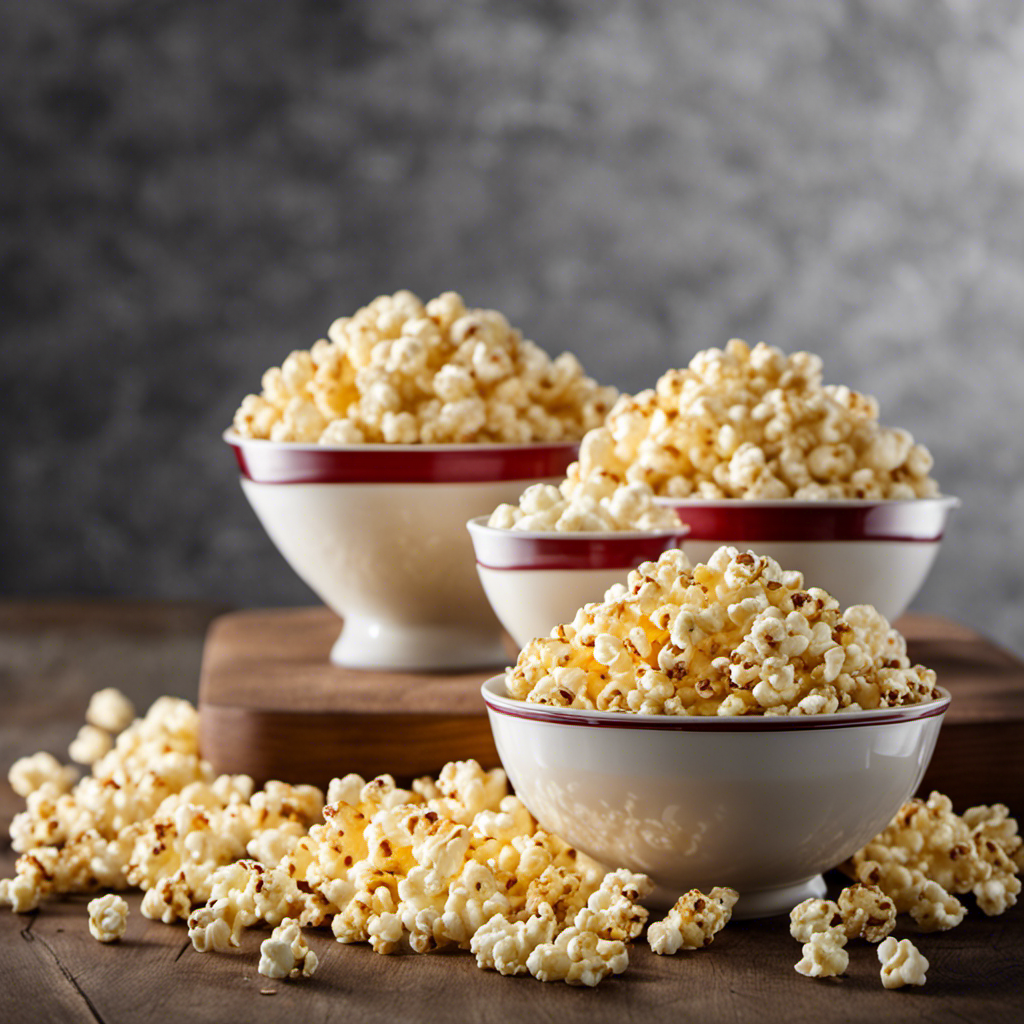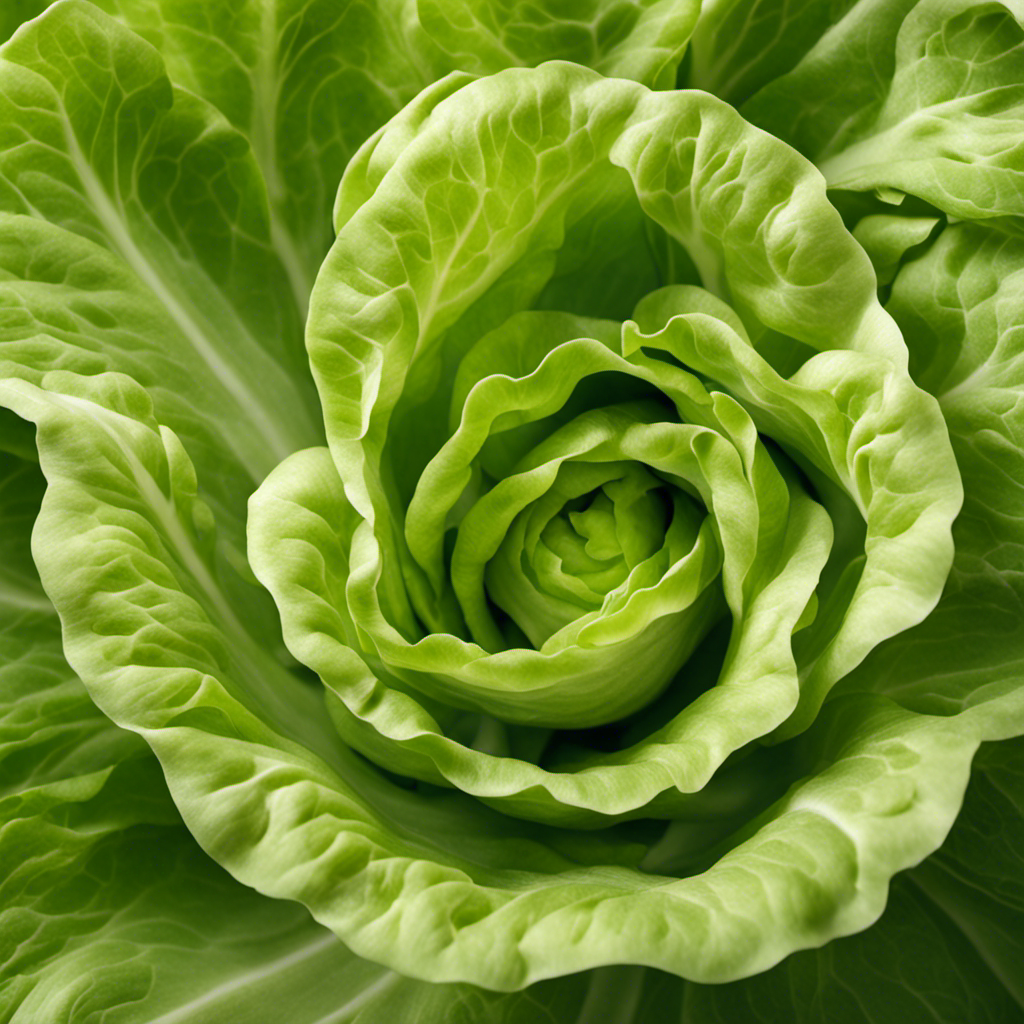I have always loved creamy, cheesy mac and cheese, so when I discovered that I had run out of milk and butter, I thought my mac and cheese dreams were shattered.
Little did I know, there are alternative ingredients that can give you that same luscious texture and mouthwatering taste.
In this article, I’ll share with you my step-by-step instructions on how to make Kraft mac and cheese without milk or butter.
Get ready to indulge in a dairy-free mac and cheese experience like never before!
Key Takeaways
- Alternative ingredients such as plant-based milk and vegan butter can be used to create a creamy texture in Kraft Mac and Cheese without milk or butter.
- Non-dairy options like almond milk, soy milk, and coconut milk can be used as substitutes for milk in dairy-free mac and cheese.
- Nutritional yeast can be added to provide a cheesy flavor and added nutrients in dairy-free mac and cheese recipes.
- Butter alternatives such as coconut oil, olive oil, almond butter, and cashew butter can be used to add flavor and a creamy texture to dairy-free mac and cheese dishes.
The Importance of Substituting Milk and Butter in Kraft Mac and Cheese
You’ll want to understand why substituting milk and butter in Kraft Mac and Cheese is important.
There are several alternatives to dairy that can be used in mac and cheese recipes, and they come with a multitude of benefits.
One of the main benefits of dairy-free mac and cheese is that it caters to individuals with lactose intolerance or dairy allergies. By using non-dairy milk such as almond milk or soy milk, you can still achieve a creamy and delicious texture.
Another benefit is that dairy-free mac and cheese can be a healthier alternative. It can be lower in saturated fat and cholesterol, and it can also be packed with nutrients by using ingredients like nutritional yeast for a cheesy flavor.
Alternative Ingredients for Creamy Mac and Cheese
Using alternative ingredients like plant-based milk and vegan butter can result in a creamy mac and cheese. When it comes to dairy-free cheese alternatives, there are plenty of options available in the market. I personally prefer using a combination of cashews, nutritional yeast, and vegetable broth to create a rich and cheesy sauce.
The cashews provide a creamy texture, while the nutritional yeast adds a cheesy flavor. For non-dairy cream substitutes, coconut milk or almond milk work wonderfully. These alternatives not only cater to those with lactose intolerance or dairy allergies, but they also offer a healthier option for everyone.
Step-by-Step Instructions for Making Mac and Cheese Without Milk or Butter
When it comes to making dairy-free macaroni, there are plenty of options to choose from. Whether you’re lactose intolerant or simply looking to cut back on dairy, there are substitutes for milk that can still give your mac and cheese that creamy texture.
And if you’re worried about missing out on the rich flavor that butter brings, fear not, as there are plenty of delicious alternatives available.
Dairy-Free Macaroni Options
There’s a variety of dairy-free macaroni options available for making Kraft mac and cheese without milk or butter. As someone who follows a dairy-free diet, I’ve tried a few different brands and vegan cheese options to find the perfect combination. Here are my top picks:
| Brand | Type | Key Ingredient |
|---|---|---|
| Daiya | Mac and Cheese | Non-dairy cheese |
| Annie’s | Vegan Mac | Nutritional yeast |
| Earth Balance | Vegan Cheddar | Plant-based oils and flavors |
| Amy’s | Rice Macaroni | Organic rice flour |
| Tofutti | Better Than Cheese | Soy protein and vegetable oils |
These dairy-free macaroni brands offer a delicious alternative to traditional mac and cheese. Whether you’re lactose intolerant, vegan, or simply looking to reduce your dairy intake, give them a try and enjoy a creamy, cheesy bowl of mac and cheese without the milk or butter.
Substitutes for Milk
If you’re lactose intolerant or following a dairy-free diet, you can try these milk substitutes in your mac and cheese. Don’t worry, you won’t be sacrificing flavor or creaminess with these dairy-free options.
Here are four vegan substitutes that will make your mac and cheese just as delicious:
-
Almond Milk: This nutty, creamy milk adds a subtle sweetness to your mac and cheese. It’s also a great source of vitamin E and calcium.
-
Coconut Milk: Creamy and rich, coconut milk gives your mac and cheese a tropical twist. It adds a unique flavor and pairs well with spicy or Asian-inspired mac and cheese recipes.
-
Soy Milk: A classic dairy substitute, soy milk is a versatile option for mac and cheese. It has a creamy texture and a slightly nutty taste.
-
Oat Milk: This trendy milk alternative adds a mild, slightly sweet flavor to your mac and cheese. It’s also a great option for those with nut allergies.
With these dairy-free options, you can still enjoy a comforting bowl of mac and cheese without compromising your dietary restrictions or preferences.
Butter Alternatives for Flavor
You can still enjoy the rich and creamy flavor of mac and cheese by using dairy-free butter alternatives.
When it comes to butter substitutes, there are plenty of non-dairy options available that can bring that same delicious taste to your dish.
One popular choice is coconut oil, which adds a subtle tropical flavor to your mac and cheese.
Another option is olive oil, which lends a slightly fruity and peppery note to the dish.
For a nutty and rich taste, you can try using almond butter or cashew butter.
These alternatives not only provide a creamy texture but also add a unique twist to the classic mac and cheese recipe.
Tips for Achieving the Perfect Texture Without Dairy Products
When it comes to dairy-free alternatives for creaminess, I have found that coconut milk and cashew cream are excellent options. They both provide a rich and velvety texture that is reminiscent of traditional cream-based dishes.
To enhance the flavor without milk, I often rely on ingredients like nutritional yeast, miso paste, and lemon juice. These ingredients add depth and complexity to the dish, creating a satisfying taste experience.
Dairy-Free Alternatives for Creaminess
To achieve creaminess without using milk or butter in your Kraft mac and cheese, try using a dairy-free alternative like coconut milk or almond milk. These non-dairy options can provide the same rich and velvety texture that milk and butter typically offer.
Here are four dairy-free alternatives that will take your mac and cheese to the next level:
-
Coconut Milk: This creamy and slightly sweet milk adds a tropical twist to your mac and cheese. It pairs well with the cheesy flavor and adds a depth of richness.
-
Almond Milk: With its subtle nutty flavor, almond milk gives a creamy and smooth consistency to your mac and cheese. It’s a popular choice for those with dairy allergies or lactose intolerance.
-
Cashew Cream: Made by blending soaked cashews with water, cashew cream adds a luxurious creaminess to your mac and cheese. It’s thick, velvety, and incredibly delicious.
-
Nutritional Yeast: This dairy-free cheese alternative not only adds a cheesy flavor to your mac and cheese but also provides a boost of nutrients. It’s a staple ingredient in many dairy-free mac and cheese recipes.
Enhancing Flavor Without Milk
Using dairy-free alternatives like coconut milk or almond milk can enhance the flavor of your mac and cheese without the need for milk or butter. Not only do these alternatives provide a creamy texture, but they also add a unique and delicious taste to your dish. The richness of coconut milk pairs perfectly with the cheesy goodness of mac and cheese, while almond milk adds a subtle nutty flavor. To further enhance the flavor, you can experiment with dairy-free cheese options such as vegan cheddar or mozzarella. These cheeses melt beautifully and contribute to the overall creaminess of the dish. Additionally, alternative seasonings like nutritional yeast or smoked paprika can add depth and complexity to your mac and cheese, making it a flavorful and satisfying meal.
| Dairy-Free Cheese Options | Alternative Seasonings |
|---|---|
| Vegan cheddar | Nutritional yeast |
| Vegan mozzarella | Smoked paprika |
| Cashew cheese | Garlic powder |
| Tofu-based cheese | Onion powder |
| Plant-based cheese spread | Dried herbs |
Achieving Desired Consistency
You can achieve the desired consistency of your mac and cheese by adjusting the amount of dairy-free alternative you use. Here are four tips to help you achieve the perfect texture for your plant-based mac and cheese:
-
Start with a small amount of dairy-free alternative and gradually add more as needed. This will allow you to control the thickness of the sauce.
-
If your mac and cheese is too thin, you can thicken it by adding a tablespoon of cornstarch mixed with water. Stir it into the sauce and cook until it thickens.
-
On the other hand, if your mac and cheese is too thick, you can thin it out by adding a splash of vegetable broth or plant-based milk.
-
Remember that different dairy-free alternatives may have different consistencies, so be sure to adjust accordingly. Some options include almond milk, soy milk, or coconut milk.
Flavor Enhancements to Make Your Mac and Cheese Irresistible
Don’t worry, there are plenty of flavorful additions you can use to make your mac and cheese irresistible, even without milk or butter. When it comes to alternative seasonings, options are abundant. You can experiment with different herbs and spices to add depth and complexity to your dish. Consider using garlic powder, onion powder, paprika, or even a dash of cayenne pepper for a hint of heat. For those following a vegan diet, there are also a variety of vegan cheese options available. These cheeses are made from plant-based ingredients, such as cashews or nutritional yeast, and can provide a creamy and cheesy flavor to your mac and cheese. With the right combination of alternative seasonings and vegan cheese, you can create a delicious and satisfying mac and cheese that will please everyone at the table.
| Seasoning | Vegan Cheese |
|---|---|
| Garlic powder | Cashew cheese |
| Onion powder | Nutritional yeast |
| Paprika | Vegan cheddar |
| Cayenne pepper | Almond cheese |
Common Mistakes to Avoid When Making Dairy-Free Mac and Cheese
To ensure your dairy-free mac and cheese turns out creamy and flavorful, it’s important to avoid common mistakes in the preparation process. Here are four key things to keep in mind:
-
Choosing the right non-dairy milk: Opt for a creamy and rich non-dairy milk, such as almond milk or coconut milk. Avoid watery alternatives, as they can result in a thin and flavorless sauce.
-
Using the right dairy-free cheese: Look for a high-quality dairy-free cheese that melts well and has a similar taste and texture to regular cheese. Experiment with different brands to find one that suits your taste.
-
Seasoning generously: Dairy-free mac and cheese can sometimes lack in flavor, so don’t be afraid to season your sauce with spices, herbs, and even nutritional yeast to give it a cheesy and savory kick.
-
Avoiding overcooking: Be cautious not to overcook your dairy-free mac and cheese, as it can lead to a mushy and unappetizing texture. Cook the pasta until it is al dente and mix it gently with the sauce.
By following these tips, you’ll be able to create a delicious and satisfying dairy-free mac and cheese that even non-vegans will love.
Happy cooking!
Creative Variations on Classic Mac and Cheese Recipes
For a fun twist on classic mac and cheese, try adding ingredients like bacon, jalapenos, or even lobster to create a flavorful and unique dish. Not only can you get creative with your add-ins, but you can also experiment with different types of cheese to make your mac and cheese truly one-of-a-kind. If you’re looking for dairy-free cheese options, there are plenty of alternatives available that melt just as well as traditional cheese. Some popular choices include almond-based cheese, cashew-based cheese, and even soy-based cheese. Additionally, you can take your mac and cheese to the next level by using unique pasta shapes. Think beyond the traditional elbow macaroni and try using shapes like shells, spirals, or even bowties. The possibilities are endless when it comes to creating your own unique mac and cheese masterpiece.
| Cheese Option | Description | Best Used For |
|---|---|---|
| Almond-based | Creamy and slightly nutty, melts well and adds a subtle flavor | Classic mac and cheese |
| Cashew-based | Rich and velvety, perfect for a gourmet twist on mac and cheese | Lobster mac and cheese |
| Soy-based | Mild and creamy, great for adding a cheesy flavor to any dish | Vegan mac and cheese |
Frequently Asked Questions About Making Mac and Cheese Without Milk or Butter
Have you ever wondered what alternatives you can use to make a creamy and delicious mac and cheese without using milk or butter? Well, you’re in luck! There are plenty of dairy-free options and cooking techniques you can try to satisfy your mac and cheese cravings. Here are some ideas to get you started:
-
Nut milk: Substitute regular milk with almond milk, cashew milk, or coconut milk to add creaminess to your mac and cheese.
-
Vegan cheese: There are numerous brands that offer delicious dairy-free cheese alternatives made from nuts, soy, or tapioca starch. Experiment with different flavors to find your favorite.
-
Nutritional yeast: This ingredient not only adds a cheesy flavor to your mac and cheese but also provides essential nutrients. Sprinkle it on top or mix it into the sauce for extra richness.
-
Cashew cream: Soak cashews overnight, then blend them with water until smooth. This creamy mixture can be used as a base for your dairy-free mac and cheese sauce.
With these dairy-free options and cooking techniques, you can enjoy a delicious and satisfying mac and cheese without compromising your dietary preferences. Give them a try and see which ones you like best!
Frequently Asked Questions
Can I Use a Non-Dairy Milk Substitute in Place of Regular Milk in the Recipe?
Yes, you can use non-dairy milk substitutes as a replacement for regular milk in the recipe. Some of the best substitutes for milk in mac and cheese include almond milk, soy milk, and coconut milk.
Can I Use Margarine or Oil Instead of Butter in the Recipe?
I’ve found that using margarine or oil as alternatives to butter in mac and cheese can work well. They add a rich, creamy flavor that pairs perfectly with the cheesy goodness of the dish.
Can I Use a Different Type of Pasta Besides Macaroni for the Dish?
Sure! There are plenty of different pasta options you can use besides macaroni for this dish. Some alternative pasta shapes that work well with mac and cheese include shells, penne, and fusilli.
Can I Add Vegetables or Other Ingredients to the Mac and Cheese to Make It More Nutritious?
Sure, I love adding vegetables to my mac and cheese for added nutrition. It’s a great way to sneak in some extra veggies. There are so many variations of mac and cheese recipes to try!
Can I Make the Mac and Cheese Ahead of Time and Reheat It Later?
Yes, I can make mac and cheese ahead of time and reheat it later. I can make it in the microwave by following the instructions on the package and then store it in the fridge. To reheat, I simply microwave it until it’s hot.
Conclusion
As I take a bite of the velvety, creamy mac and cheese, I can’t help but marvel at how it’s made without a drop of milk or butter. The smoothness of the sauce, the perfect blend of flavors, it’s truly a culinary masterpiece.
Who knew that with a few simple substitutions and a touch of creativity, you could create such a delicious dish?
So, whether you’re lactose intolerant, out of milk and butter, or simply looking to try something new, this dairy-free mac and cheese recipe is a game-changer.
Get ready to indulge in a bowl of pure, cheesy goodness like never before.









